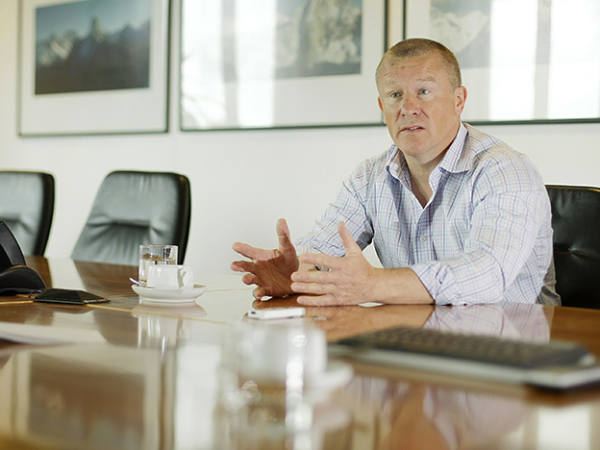The new tax year brings with it a new form of individual savings account (Isa) - the Lifetime Isa (Lisa). This is aimed at investors and savers aged between 18 and 39, either as a way to save for a first home or as a retirement pot, and benefits from an attractive government bonus.
However, what is really important with a Lisa - as with any other savings pot - is the investment strategy you employ and the investments you hold in it. So we have set out some of the strategies, asset allocation models and funds you should use with your Lisa, depending on what your goal is.
We also look at where you can buy a Lisa and why so few brokers are offering it.
Opening a Lisa to buy a home: 5-10 year timescale
If you are a first-time buyer in your mid-to-late 20s you are likely to have an investment timescale of under 10 years. If you are likely to buy a home within three years you should hold the money in cash; if your time horizon is between three and five years, you could hold your money in highly liquid low-risk investments. If you have five years or more, you should be taking more risk in the stock market. There are two ways to construct a smaller portfolio with a time horizon of between five and 10 years. You could either buy one multi-asset fund or build up a portfolio of a few sector-specific individual funds, starting with a core of three or four.
With a portfolio of sector-specific funds, you should start with some exposure to your home market - UK equities. So Darius McDermott, managing director at Chelsea Financial Services, recommends starting out with one UK equity fund, one global equity fund and one emerging markets or Asian equity fund.
He suggests Investec UK Alpha (GB00B7LM4J06) as a "good core fund with 75 per cent in quality companies and up to 25 per cent in special situation recovery plays. It is structured to generate good returns whether growth or value stocks are in vogue".
Ben Yearsley, director at Shore Financial Planning, also suggests starting with a three-fund portfolio, with an allocation to mainstream UK equities of between 30 per cent and 50 per cent. He likes Old Mutual UK Alpha (GB00B946BX62), CF Woodford UK Equity Income (GB00BLRZQC88) and Threadneedle UK Equity Income (GB00B888FR33). "You could then add a global fund to give you overseas exposure, for example M&G Global Dividend (GB00B39R2R32) or Artemis Global Income (GB00B5N99561)," he says.
M&G Global Dividend has 54 per cent of its assets in US equities and yields 2.7 per cent. For more detail on Artemis Global Income, see our fund tip.
Mr Yearsley also suggests holding a strategic bond fund such as Jupiter Strategic Bond (GB00B544HM32). Strategic bond funds allow their managers to move between different segments of the bond market rather than focusing on one area, meaning they can take advantage of current opportunities and avoid problem areas.
For investors who would prefer a 'one-stop shop' multi-asset fund options include RIT Capital Partners (RCP) or Personal Assets Trust (PNL), says Jason Hollands, managing director at Tilney Group, both of which are focused on capital preservation. Although RIT Capital Partners is a single fund, some of its assets are allocated to external fund managers. Over five years RIT Capital Partners has returned 70.5 per cent and Personal Assets Trust has returned 28.5 per cent.
If you want your fund fees to amount to less than you could opt for passive tracker ones rather than active ones run by a manager. For a passive portfolio, James McManus, analyst at broker Nutmeg, suggests having 40 per cent in equities and 60 per cent in bonds. "A short to medium timeframe prevents investors from taking too much equity risk," he explains. "Assuming the timeframe is five to seven years, we would suggest a moderate equity exposure and a possible allocation to high-yielding but riskier areas of the bond market, particularly high yield and emerging market bonds."
He highlights UBS ETF Barclays USD Emerging Markets Sovereign UCITS ETF (SBEG), a fairly new exchange traded fund (ETF) that tracks an index of dollar-denominated emerging market debt. He also mentions PIMCO Short-Term High Yield Corporate Bond Index Source UCITS ETF (STHS), with an ongoing charge of 0.60 per cent, and iShares JPMorgan $ Emerging Market Bond UCITS ETF (SEMB) with an ongoing charge of 0.45 per cent.
However, you will need to de-risk your holdings as you approach your end goal of buying a home. Mr Morgan says: "As timescales become more definite you may need to adjust your strategy and take less risk, possibly scaling out into cash."
How Lisa works Anyone between 18 and 39 can save up to £4,000 a year into a cash or stocks-and-shares Lisa, either in lump sums or monthly payments, and receive a 25 per cent government bonus. This tax year it will be paid at the end of the year, and from 2018-19 on a monthly basis. After 12 months you can access the money to buy a home worth £450,000 or less. If you do not use the money to buy a home, you have to leave it invested until age 60, or face a 25 per cent exit penalty if you take it out after the end of this tax year. You can pay into the Lisa until age 50 if it is held in your name. You cannot open a Lisa on behalf of someone else, but you could gift money to your child or grandchild to put into a Lisa they opened themselves, if they are over 18. If an 18-year-old pays just £2,000 a year into a stocks-and-shares Lisa they could build up a portfolio worth over £25,000 by the time they are 26, according to broker AJ Bell, giving them a significant sum to help buy their first home. If you open a Lisa, the £4,000 limit will count towards your annual Isa allowance, which is £20,000 for the 2017-18 tax year. But you can split that any way you like between a stocks-and-shares, cash, Innovative Finance, Help to Buy and Lifetime Isa. |
Active funds for a 5-10yr portfolio and performance (% total returns)
| Sector | Fund | 6m | 1yr | 3yr | 5yr | 10yr |
|---|---|---|---|---|---|---|
| One-stop shop funds | Investec Cautious Managed (Ben Yearsley) | 7.0 | 17.8 | 17.7 | 33.0 | 70.5 |
| Jupiter Merlin Income (BY) | 4.3 | 14.1 | 17.9 | 36.7 | 68.2 | |
| RIT Capital Partners (Jason Hollands) (Rob Morgan) | 5.0 | 14.8 | 46.0 | 68.0 | 110.0 | |
| Personal Assets Trust (JH) (RM) | 2.9 | 12.4 | 27.7 | 29.6 | 85.5 | |
| Alliance Trust (JH) | 18.6 | 38.1 | 62.4 | 109.2 | 137.1 | |
| UK equity funds | Old Mutual UK Alpha (BY) | 8.2 | 21.3 | 16.1 | 63.7 | 49.1 |
| Woodford Equity Income (BY) | 2.9 | 13.8 | ||||
| Threadneedle UK Equity Income (BY) | 5.2 | 19.6 | 30.0 | 82.1 | 118.9 | |
| Investec UK Alpha (Darius McDermott) | 6.7 | 16.5 | 24.4 | 97.6 | 123.2 | |
| Global equity funds | M&G Global Dividend (BY) | 12.6 | 35.5 | 38.4 | 78.7 | |
| Artemis Global Income (BY) | 13.3 | 30.2 | 48.1 | 120.8 | ||
| Strategic Bond funds | Jupiter Strategic Bond (BY) | 1.8 | 8.1 | 12.5 | 35.1 |
Source: FE Analytics. Performance shown for main fund share classes
Funding a Lisa for your children or grandchildren: 10-year-plus timescale
Although you cannot open a Lisa on behalf of someone else, you could build up a sum within your own investment accounts to eventually start handing over to a child or grandchild to put into a Lisa.
With a longer-term time horizon you can take more risk to potentially get a greater return, as you have longer to build up the pot and ride out short-term equity market falls. Areas you might want to include in a portfolio that has a time horizon of 10 years or more include smaller companies, biotech, India and other emerging markets, all of which tend to offer faster growth, but are more volatile.
Mr Yearsley says: "For a 10-year-plus portfolio I would have a lot of Asian and emerging market equity exposure. I would also have some UK and global small-cap exposure, as well as themes such as technology."
He suggests having a core of UK equities focused on smaller companies via funds such as Old Mutual UK Smaller Companies (GB00B1XG9599). This fund is the top-performing Investment Association UK Smaller Companies fund over one and three years, and currently has 60 holdings, of which the top 10 include Fevertree Drinks (FEVR) and Boohoo.com (BOO).
Mr Yearsley also likes Schroder Asian Alpha Plus (GB00BDD27J12) and Aberdeen Asian Smaller Companies (AAS).
Mr McDermott, meanwhile, suggests having exposure to biotech and Indian equities for tactical exposure. Ways to get exposure to these include Biotech Growth Trust (BIOG) and International Biotechnology Trust (IBT). These have both delivered total returns of more than 200 per cent over five years, but have been volatile at times, for example criticism over US drug pricing last year was detrimental to their share prices.
Active funds for a 10yr+ portfolio and performance (% total returns)
| Sector | Fund | 6m | 1yr | 3yr | 5yr | 10yr |
|---|---|---|---|---|---|---|
| UK Equity funds | Fundsmith Equity (JH) | 8.5 | 29.7 | 92.9 | 158.7 | |
| CF Lindsell Train UK Equity (JH) | 5.1 | 17.6 | 40.8 | 114.6 | 197.6 | |
| Smaller company funds | Standard Life Global Smaller Companies (BY) | 10.3 | 31.2 | 48.7 | 115.6 | |
| Old Mutual UK smaller companies (BY) | 14.0 | 29.1 | 42.6 | 131.9 | 188.1 | |
| Franklin UK Smaller Companies (RM) | 8.6 | 9.8 | 22.7 | 90.2 | 61.1 | |
| Emerging Markets | Lazard Emerging Markets (RM) | 10.6 | 42.5 | 35.7 | 34.5 | 123.2 |
| Asia | Schroder Asian Alpha Plus (BY) | 10.3 | 40.9 | 55.4 | 68.4 | |
| Aberdeen Asian Smaller Companies (BY) | 7.7 | 26.5 | 30.1 | 44.1 | 212.7 | |
| Invesco Perpetual Asian (RM) | 15.3 | 50.0 | 68.9 | 87.1 | 202.2 | |
| Specialist funds | International Biotechnology (IC) | 10.0 | 45.7 | 116.1 | 234.8 | 291.5 |
| Biotech Growth Trust (IC) | 5.4 | 22.6 | 54.7 | 210.4 | 581.6 |
Source: FE Analytics. Performance shown for main fund share classes
Building retirement savings in a Lisa
If you have no plans to buy a house, or already own one, you could use the Lisa as a retirement saving tool on top of saving into other pensions.
"Those under 40 saving for retirement have a long time horizon, will probably be building up savings gradually and will typically wish to maximise return with day-today volatility largely irrelevant," says Rob Morgan, analyst at Charles Stanley. "So a large allocation to equities would be appropriate. I would advocate a wide geographical spread including emerging markets and Asia via funds such as Lazard Emerging Markets (GB00B24F1G74) or Invesco Perpetual Asian (GB00BJ04DS38). I would also ensure there is some exposure to smaller company funds - often a forgotten engine of returns."
He suggests Old Mutual UK Smaller Companies and Franklin UK Smaller Companies (GB00B7FFF708).
Mr McManus says that for a longer-term portfolio passive investors might want to consider emerging market equities and smaller company ETFs such as iShares Core MSCI EM IMI UCITS ETF (EMIM), iShares Edge MSCI EM Minimum Volatility UCITS ETF (EMV), iShares S&P Small Cap 600 UCITs ETF (ISP6), iShares MSCI EMU Small Cap UCITs ETF (CES1) and iShares MSCI Japan Small Cap UCITS ETF (ISJP).
Oliver Smith, portfolio manager at broker IG adds: "We are believers in global reflation, and think that overweight positions in Asian and European equities are warranted at this stage in the cycle. Shorter-dated bonds and some gold will also help spread risk in the short term."
Passive fund performance (cumulative total returns)
| 6m (%) | 1yr (%) | 3yr (%) | 5yr (%) | |
|---|---|---|---|---|
| iShares Core MSCI Emerging Markets IMI UCITS ETF | 10.8 | 34.0 | ||
| iShares S&P Small Cap 600 UCITS ETF | 15.4 | 40.5 | 69.4 | 140.4 |
| iShares Edge MSCI Emerging Markets Minimum Volatility UCITS ETF | 5.0 | 22.7 | 32.7 | |
| iShares JPMorgan $ Emerging Markets Bond UCITS ETF | 3.0 | 24.2 | 56.6 | 62.5 |
| iShares MSCI EMU Small Cap UCITS ETF | 11.9 | 28.2 | 40.0 | 119.3 |
| iShares MSCI Japan SmallCap UCITS ETF | 8.9 | 33.6 | 77.6 | 100.6 |
| Pimco Short-Term High Yield Corporate Bond Index Source UCITS ETF | 2.6 | 21.2 | 10.1 | |
| UBS ETF Barclays USD Emerging Markets Sovereign UCITS ETF | 4.2 | 26.0 |
Source: FE Analytics, as at 3.04.17
The way you pay matters
One key difference between the Lisa and the Help to Buy Isa, which is also aimed at helping first-time home buyers, is that you can pay lump sums into the Lisa. The Help to Buy Isa requires you to make monthly payments.
However, brokers may require you to make minimum monthly investments into each fund you invest in, so the way you pay might restrict the number of funds you can hold. For example, Hargreaves Lansdown requires a minimum investment of £25 per fund each month and £100 for lump sum payments. That means that if you choose to pay in small amounts monthly, for example £300 per month, you will not be able to invest in more than 10 funds at once.
However that is likely to be enough, at least when you are starting out, and putting the same amount of money into your pot each month - known as pound cost averaging - means you buy fewer units or shares when markets are expensive and more when they are cheap. Mr McDermott says that markets currently look elevated, making pound-cost averaging a far more appealing way to fund an Isa.
You may also incur dealing fees when you make payments into your Isa, although some brokers do not charge to trade funds. For example, Hargreaves Lansdown charges £11.95 per trade for listed securities such as investment trusts or ETFs if you make fewer than 10 transactions in one month, which could mount up if you pay a relatively small amount into a large number of funds each month.
How many holdings do you need?
There is no rule determining how many holdings you should have - it is "as much art as science", according to Mr McDermott. But when starting out, one single well-diversified fund might be sufficient. When your portfolio reaches a size of £2,000 you may want to allocate it into different funds, but between four and 12 funds are sufficient even for portfolios as large as £50,000.
Mr Yearsley suggests investing a portfolio worth between £50,000 and £60,000 in around 10 funds, and a large portfolio worth about £250,000 in 15 to 18 funds. Mr Hollands adds that a maximum of 20 funds, even for very large pots, should suffice, while around a dozen holdings would "enable an investor to have their long-term core holdings, with smaller positions in tactical ideas", according to Mr Smith.
You should think of your pot as a group of core funds that you add to depending on your risk appetite and view of the market, instead of aiming for a set number of holdings.
Mr McDermott says that with a larger portfolio you could consider holding a core group of funds and then taking shorter-term tactical positions in sectors or regions as they become appealing. For example, biotech is a sector you may want to invest in for high growth, but not want to hold at all times or as you begin to de-risk your portfolio closer to the time you purchase your home or start to draw retirement savings.
Stocks-and-shares Lisa providers
Very few providers currently offer a Lisa, with many brokers having struggled to overhaul their platform by 6 April. Providers who have launched one include Hargreaves Lansdown, Nutmeg and the Share Centre.
The Lisa launch has been controversial, with the Financial Conduct Authority (FCA) issuing risk guidance on the wrapper earlier this year to address concerns that people might pay into a Lisa instead of a workplace pension and miss out on valuable employer contributions.
Mr Hollands says the slow speed at which guidance has been issued on the Lisa has meant that potential providers have not had much time to get products up and running.
And Neil Lovatt, commercial director at Scottish Friendly, adds: "The implementation of the Lisa has been a botched affair by the government. Even so, this is set to be the go-to investment for life's journey in the years to come. We expect the Lisa to become an incentivised home for saving and investing that will eventually open up for all age groups, not just the under-40s, and one that will also be open to employer contributions."
An IG spokesperson says that because in this tax year the government bonus will not be paid until the end of the year there is not much incentive to launch a Lisa before then - when many providers plan to their Lisas.
Providers offering or planning Lisa launches
| Provider | Lisa timescale |
|---|---|
| Hargreaves Lansdown | Available with full range of investment options |
| The Share Centre | Available with choice of three ready-made fund options. Plans to launch DIY fund/share options later in the year |
| Fidelity | Plans to launch in 2018 |
| Alliance Trust Savings | Considering launch |
| IG | Plans to launch later in the year |
| Nutmeg | Available with choice of ready-made ETF portfolios |
| AJ Bell | Plans to launch soon |
| Interactive Investor | Plans to launch |
| Bestinvest | Plans to launch before the end of the tax year |











